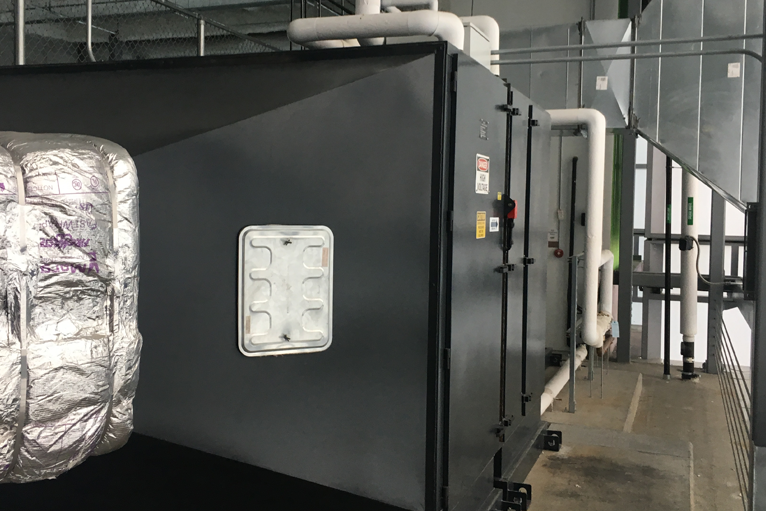An Exploration of factors to keep in mind and the advantages of heat recovery in commercial kitchen exhaust.
With rising energy costs, food service operations are looking to leverage every energy dollar to reduce waste and minimize their environmental impact. Heat recovery systems have been around for a long time. Still, commercial kitchen exhaust systems present a unique challenge because of the effluent carried in the airstream and maintenance on the heat exchanger. In addition, finding a system listed for such a rigorous application.
Using heat recovery ventilation in commercial kitchen exhaust systems can effectively save energy and reduce operating costs. With exhaust temperatures exceeding 90⁰F or higher, this waste heat is a ready source for recovery and reuse.
A Heat Recovery System differs from an Energy Recovery System (ERV) in a significant way. Heat Recovery does not mix air paths (exhaust and supply) as with kitchen ventilation. The air is “contaminated” and cannot be combined or come in contact with incoming air. Heat recovery is the transfer of sensible heating only. An Energy Recovery system can transfer both sensible and latent energy using various methods such as a “Energy Wheel” or Desiccant Wheel.
Several things must be considered when determining the appropriateness of heat recovery in a kitchen ventilation exhaust system.
- Understand Local Regulations: Before implementing heat recovery, it’s essential to understand local building codes and regulations related to commercial kitchen exhaust systems. Some jurisdictions may have specific requirements or restrictions on heat recovery technologies when used with commercial kitchen exhaust. NFPA 96, Chapter 9 provides some guidance.
- The most common type of heat recovery system available for commercial kitchens is something referred to as a “run-around coil” or water/glycol loop. It is popular for commercial kitchen exhaust is because it is robust and can be mated with a supply coil in the make-up air system to utilize the recovered heat.
- The location of the heat recovery coil should be in a Pollution Control System with efficient filtration to keep the coil from fouling. It should also be listed for the application as this is a prerequisite for its use in a commercial kitchen exhaust system. Combined with a make-up air unit with a heat recovery coil, it provides a completely integrated system to recover the available waste heat.
- Ensure the heat recovery system is correctly sized to handle the volume of exhaust air from your kitchen and coils are sized to maintain proper discharge air temperature. A factory expert can assist with this selection and provide the proper size and efficiency based on the estimated exhaust temperature.
- Regular maintenance of the Pollution Control filtration is crucial to ensure the heat recovery system operates at peak efficiency. Filters, coils, and other components should be cleaned, replaced, and inspected regularly to prevent clogs and deterioration.
- An Integrated control system that optimizes the heat recovery system operation should be part of the package.
Maintain a balanced system by ensuring the supply and exhaust air flows are matched appropriately. This helps prevent negative or positive pressure issues in the kitchen space. An automated DCKV control platform can manage this feature. Implement a monitoring system that tracks the performance of the heat recovery system. Analyzing data over time can help identify further energy savings and system optimization opportunities.
Consider the long-term cost savings associated with heat recovery when making investment decisions. While the initial investment may be higher, the energy savings over time can outweigh the upfront costs. Manufacturers have ROI calculators that will consider the weather city, hours of operation, energy costs, and capital investment.
If you’re unsure about the best approach for implementing heat recovery in your commercial kitchen, consider consulting with experts who specialize in commercial kitchens. They can provide valuable guidance and recommendations. Implementing heat recovery in a commercial kitchen exhaust system requires careful planning and ongoing maintenance, but it can lead to significant energy savings and a more sustainable operation.
Read another article relating to Heat Recovery – Heat Recovery in Commercial Kitchens
Subscribe to kitchenventilation.com
Stay up to date by subscribing to Halton’s Commercial Kitchen Ventilation Blogs by entering your email address to subscribe and Halton will provide you with the latest information on commercial kitchen exhaust hoods, pollution control units, air handling, and safety systems. You will receive notifications of new posts by email.

